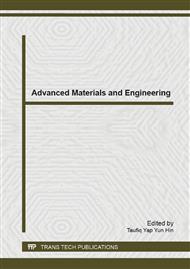p.265
p.270
p.275
p.280
p.284
p.288
p.292
p.300
p.307
The Effects of the Total Number of Regions and Average Power Density on the Overall Performance of Modified CANDLE Burn-Up Scheme Based Gas Cooled Fast Reactors
Abstract:
In this study the effects of the total number of regions and average power density in Modified CANDLE burn-up scheme are studied. In the previous studies usually 10 equal axial regions are applied in Modified CANDLE burn-up scheme, and in this study 6, 8 and 10 regions Modified CANDLE burn-up scheme performance is compared and discussed. The core power level varied from 800-1000MWt. Several comparisons are performed between 10 and 8 regions Modified CANDLE, 8 and 6 regions Modified CANDLE and some additional comparison which include some changing in power level. Some general remark which we can get from this study is that reducing region with the same cycle length and power level will resulted in significant drop of effective multiplication constant especially at the beginning of life and the reduction of discharge burn-up level. On the other hand the increase of the power level with the same region number and cycle length resulted in higher effective multiplication constant value especially at the beginning of life, while at the end of life the differences are decrease. Then when we reduce the region number and increase the power level at the same time we get the mixed effect in which the system performance is relatively go back to the original case.
Info:
Periodical:
Pages:
284-287
Citation:
Online since:
June 2014
Authors:
Price:
Сopyright:
© 2014 Trans Tech Publications Ltd. All Rights Reserved
Share:
Citation:


